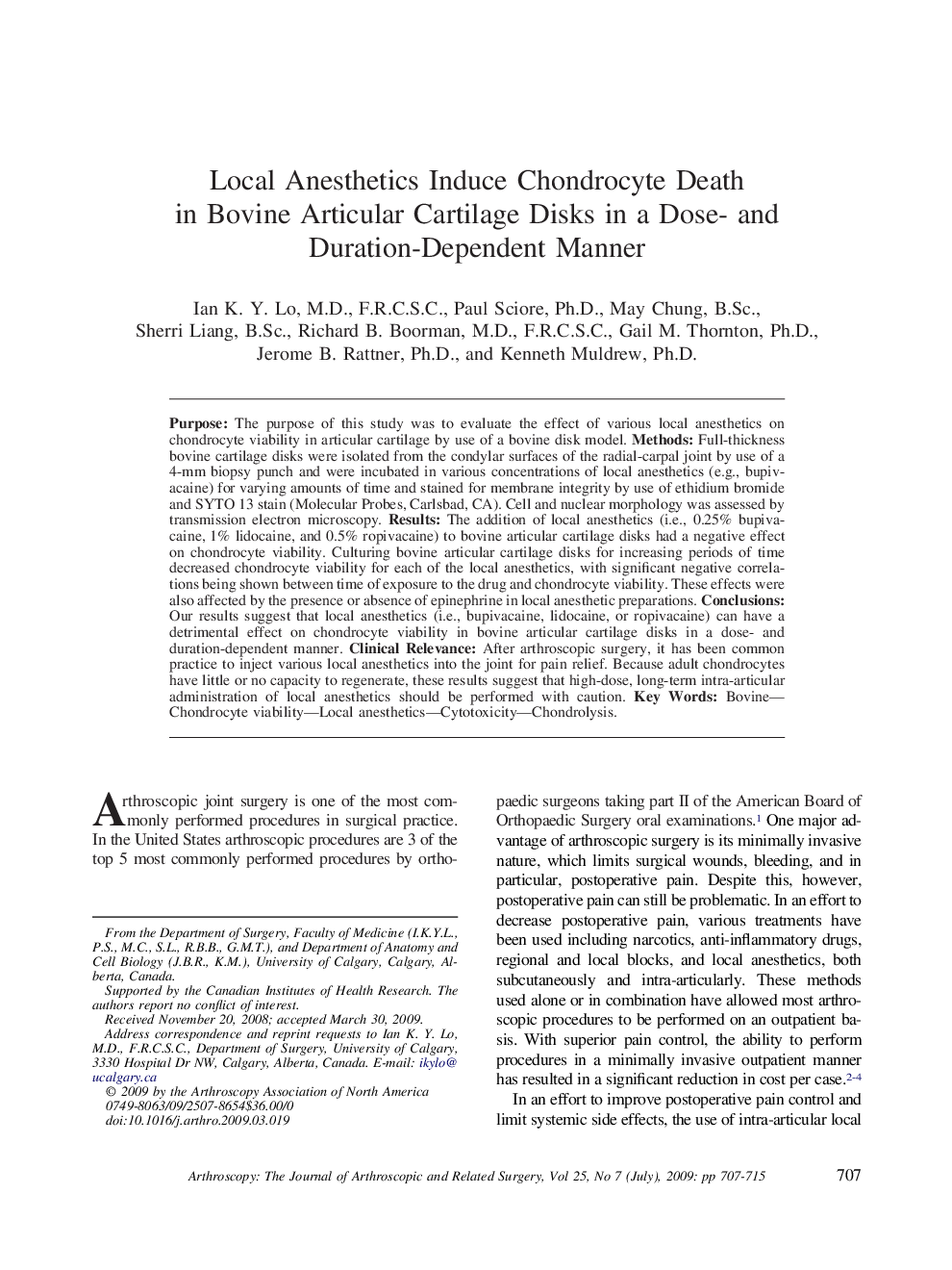| Article ID | Journal | Published Year | Pages | File Type |
|---|---|---|---|---|
| 4045440 | Arthroscopy: The Journal of Arthroscopic & Related Surgery | 2009 | 9 Pages |
PurposeThe purpose of this study was to evaluate the effect of various local anesthetics on chondrocyte viability in articular cartilage by use of a bovine disk model.MethodsFull-thickness bovine cartilage disks were isolated from the condylar surfaces of the radial-carpal joint by use of a 4-mm biopsy punch and were incubated in various concentrations of local anesthetics (e.g., bupivacaine) for varying amounts of time and stained for membrane integrity by use of ethidium bromide and SYTO 13 stain (Molecular Probes, Carlsbad, CA). Cell and nuclear morphology was assessed by transmission electron microscopy.ResultsThe addition of local anesthetics (i.e., 0.25% bupivacaine, 1% lidocaine, and 0.5% ropivacaine) to bovine articular cartilage disks had a negative effect on chondrocyte viability. Culturing bovine articular cartilage disks for increasing periods of time decreased chondrocyte viability for each of the local anesthetics, with significant negative correlations being shown between time of exposure to the drug and chondrocyte viability. These effects were also affected by the presence or absence of epinephrine in local anesthetic preparations.ConclusionsOur results suggest that local anesthetics (i.e., bupivacaine, lidocaine, or ropivacaine) can have a detrimental effect on chondrocyte viability in bovine articular cartilage disks in a dose- and duration-dependent manner.Clinical RelevanceAfter arthroscopic surgery, it has been common practice to inject various local anesthetics into the joint for pain relief. Because adult chondrocytes have little or no capacity to regenerate, these results suggest that high-dose, long-term intra-articular administration of local anesthetics should be performed with caution.
